| Umělec magazine 2007/2 >> Mexican ( and Mexican) Artist in Prague - RIFAMOS! or Multicultural Lesson No.1 | List of all editions. | ||||||||||||
|
|||||||||||||
Mexican ( and Mexican) Artist in Prague - RIFAMOS! or Multicultural Lesson No.1Umělec magazine 2007/201.02.2007 Tony Ozuna | review | en cs de es |
|||||||||||||
|
Mexican (and Mexican-American) artists seldom have exhibits in Prague, but recently there has been a surge due to some group shows. At the abcd exhibition, “Art Brut,” there was the stunning work of Martin Ramirez (1895-1963), who was born in Jalisco, Mexico but lost his mind in America and died in a mental institution in northern California, and the overlooked Consuelo “Chelo” Gonazalez Amezcua (1903-1975), born in Mexico (Piedras Negras), but since the age of ten lived along the border in Del Rio, Texas. But this was an exhibit with over 100 artists from all over the world, and the Czech Republic’s premiere of Henry Darger was clearly the showcase along with quite a few exceptional and generally unknown Czechs, like Zdenek Kosek, Lubos Plny, and Anna Zemankova. In any case, the Mexican (or Mexican-American) outside artists were more or less unnoticed or not commented on much by the press and art critics, which is too bad, because these two fascinating artists (their lives and work) deserve a broader public. Ramirez emigrated to the United States as a young adult, and he quickly got a job at a railroad company, but it was difficult for him to adjust to the harsh working conditions, and so his physical and mental health deteriorated. He became crazy, and in 1915, mute as well. He wandered around California for fifteen years, with no work and no home, until he was finally hospitalized for schizophrenia in 1930. Ramirez didn’t begin drawing until the late 1940s, using scrap paper and for larger drawings, gluing scrap paper together with bread dough and mashed potatoes. For the last fifteen years of his life, (confined at DeWitt State hospital in northern California), he created over 300 vibrant works drawing several themes incessantly: trains coming out of a tunnel and into another, sometimes several trains crossing over each other in a drawing; innocent animals in nature, mostly deers or horses with riders, and in one scene of triumph, the horserider (self-portrait of the artist) is on top of a modern pyramid (American society, the mental institution in an English-speaking world, or simply all life’s struggles), releasing a rabbit (the artist’s soul) from his hands. The rabbit soars into the sky, finally free. And the horserider has a look of contentment, at last. The work of Consuelo “Chelo” Gonazalez Amezcua is lesser known, though no less intriguing. González-Amezcua’s family emigrated from Mexico to Del Rio, Texas when she was ten and she lived, more or less, the rest of her life in this little border town. Unlike Ramirez, however, she was recognized for her artistic talents early on. She received a scholarship from the Mexican government in 1930 to study at an art academy in Mexico, but the death of her father prevented her from taking this opportunity. Instead, she worked at a department store and continued to draw and write poetry in her free time. Her work has typical Chicano themes, but in a denser jungle: Mexican myths, pre-Columbian history (gods and kings), tropical birds, extravagant women, and hundreds of hands, large and small. The hands in her work are the creative force and her trademark. González-Amezcua is best known in Mexican-American art circles for works that honor her heritage, such as Mexico Americans (1969), in which a hand holds a banner, which represents North and South America, united by a design radiating from a medallion inscribed “Mexico Americans.” Over the map, there is an eagle, which is the national symbol for both Mexico and the United States, and beneath the banner she wrote “Soy Americana de descendencia Mexicana/ y por doquiera que voy se llevar con dignidad/ el nombre de los Estados Unidos y Mexico” (“I am an American of Mexican descent/ and wherever I go I take with me the dignity/ of the United States and Mexico”). A very different breed of Mexican-American participated in an exhibit two years before. Dialogue: Los Angeles/Prague 2004 was an exhibit in honor of the original Dialogue: Los Angeles/Prague, which took place in 1989, just before the Velvet Revolution. For that exhibit, curated by American artist Barbara Benish and Czech Margita Titlova, 16 artists from L.A. were invited under the auspices of the Czechoslovak Communist Youth to exhibit in Prague, and twelve Czechs were permitted to show their work in Los Angeles the following year. Fifteen years later, Dialogue: Los Angeles/Prague returned with some old and new Czech and LA artists, but also this time with one Chicano artist included: Daniel Joseph Martinez (born 1957). Martinez’s disturbing, in-your-face, huge self-portraits from the series, More Human Than Human: Nothing is True, All is Permitted (1998-2001) showed this town, for the first time, what the world gets when a street-wise Chicano from Los Angeles goes deeper than his peers, under the influence of 19th and 20th German philosophers, science fiction, Hollywood-style animatronics and la vida loca. Martinez says that these works were partly based on Nietzsche’s, Twilight of the Idols; or, How One Philosophizes with a Hammer (1888). “The subject is cultural pain and anesthesia projected onto the body as self-portraits of mental disorders-to consider the condition of a culture anesthetized beyond the point of recognition. I have attempted to compress the hyper-simulated and the hyper-real into a theoretically hallucinogenic space. These photographs are the result of a series of performances done specifically for the camera. Using state-of-the-art prostheses and prosthetics, without the aid of any digital manipulation to the image, I created synthetic images of hyper-simulation that only reference the use of digital technologies. Yet these images are all hand-created and hand-manipulated-analogue illusions of the digital realm, doppelgangers dreaming of their simulated selves, reflecting a hyperrealism of a world gone mad,” he says. Unfortunately Martinez’s contribution wasn’t given any special attention by critics, nor much explanation about his work at the exhibit, though his mug-shots in the 2004 show could not have been shown in Prague 15 years before. Not because his work was overly political, either; rather, his work is too powerful on a personal level. And such a strong personal sense or overpowering presence can be disturbing, like an intrusion into the viewer’s own fears or desires. Fear and desire were themes taboo in Czech art under communism, just as threatening to social order as a dissenting ideology. Then and now--the most personal is the most political, and for visual artists like Daniel Joseph Martinez, undoubtedly the most potent form of communication. How to describe them: a lobotomized head, or rather a face that has been removed and then stitched back to the head (artist’s self portrait), a slit wrist, a face of insanity, dripping saliva from his mouth (all the artist’s self portrait), each containers of violence, in their own right. These are the only ones that made it to Prague, but other photos from this series, subtitled Coyote, I like Mexico and Mexico Likes Me, are more graphic. One photo shows the artist inserting his hand into his stomach and then pulling out his guts. He looks down on them with a look of passive melancholy. There is the artist with his eyelids stapled shut, and another with him holding his severed ears in his palms. There is his severed head is on a silver platter, but the artist is also intact in this image, pulling up his own severed head by its hair. Finally a hand at one end of a photo holding a pistol shoots a bullet through the head of another man, blood splattered on both sides of the victim. Gruesome, yes; and certainly too much for Prague, though these were first shown at the Museo de Arte Carrillo Gil, Mexico City, 2001. At Czechpoint, The International Exhibition of Politcal Art at Galerie NoD, last year, there was contemporary video art from Mexico also reflecting a world gone mad and particularly unsettling for its violence, including Ivan Edeza’s video, de negocios y placer (2005) which looks like found footage of riflemen from helicopters shooting at fleeing naked Indians in the jungle, and action’s architectural intervention, 154 12-Gauge Cartridges, (2002). There were also unremittingly provocative works such as Enrique Ježik’s Arbeit Mach Frei (2005) showing Mexican workers using hammer and chisel to make a swastika on the cement floor of a room, and Lorena Wolffer’s performance If She is Mexico, Who Beat Her Up, showing the artist on a catwalk in fashion poses, slyly exposing hideous bruises and wounds on her body, accompanied by a background of beats and the voice-over of a US senator defending Mexico’s corrupt government at a US presidential hearing. The only Mexican artist to have exhibited solo in Prague, recently, also deserved more attention by the art press, but at least the locals got it. Transitory Present by Mexican sculptor and performance artist, César Martínez, could not be ignored by passers-by, especially children, who would stop and curiously look into the Hunt & Kastner gallery, some laughing and others puzzled by the inflating and deflating black latex figures inside. For this traveling exhibit, Martínez (born 1962 in Mexico City) used nude human models to make life-size molds or other creations like intermingling parts of the body, made of thick rubber. The figures were mostly a dull black, and they all periodically filled up with air from blow-dryers that were connected via long black tubes that resembled umbilical cords. When they were working properly, they slowly inflated, then rapidly deflated. Watching these figures inflate was like watching a person come to life, rising up from the dead, and when they were in full bloom from a distance, they even resembled the living with such detail as teeth, nipples, fingernails, and creases on knuckles. Or at least they could have been the living dead, since they weren’t very animate, rather like zombies. The facial expressions tended to be sullen, emotionless; and so even if they had been living beings full of oxygen, they would not have been full of life. And when they deflated, they collapsed like the dead in a non-heroic slump. In an essay written for the catalog of this exhibit, Martinez writes “Air is the soul of emotions. It is the body of the soul. The unsubstantial matter of life…. It is also the breath that reduces or expands us. Nitrogen and oxygen; life’s equation. This is where my interest in inflatable sculptures, soft sculptures, blown sculptures, comes from.” However, he also points out that because humans today seem to have so little concern with maintaining the proper quality of air to sustain life, we are unconsciously asphyxiating ourselves, and thus our own unhealthily clogged bronchial tubes serve as a metaphor for drowsy, emotionless and directionless lives. His latex sculptures convey a message that there are also many people alive, who are full of air, but not full of life, meaning no longer with a soul of energy and emotions. “We are inside a potential ‘bronchial tube; inside big trouble!” says Martinez. “Politicized carbon dioxide and the oxygen added tax have made life drowsy and also to go astray. The degree of this change has been such, that the respiratory tract has been mistaken for awful main streets in the most populated anxie-cities in the world.” At the exhibit in Prague, two women sat facing each other, one black and one aqua blue, taking turns rising in form. Behind them there was a man and a woman, on the wall, standing or hanging in a droop. There was a man with his mouth wide open crouched in a nearby corner, another woman crouched in a window front, and a male figure curiously balanced atop a wooden ladder—when he was full of air he looked like a stiff high diver. There was also an infant (newborn) on a pedestal, and on two other pedestals placed near the windows, there were men’s busts that rose and kissed each other. And there was a large ball of human hands on the ground, the sole object in this exhibit that rose to unite the figures, otherwise they were all in utter solitude even when close beside each other. While the figures rose and fell in solitude, this was not a quiet show, by any means. There was the constant buzz of blow-dryers and the strong smell (stench) of rubber giving the exhibit an overall industrial ambience and nervous edge. In a separate section of the gallery, there are also photographs taken by Martínez from streets in Spain and Italy. The most interesting of these are detailed shots of chance juxtapositions such as large garbage bags seemingly in a kitchen cum living room of two men living together, or the body of a woman in bikini on a billboard looming over a crowd of jaded shoppers, not noticing her at all. We fail to notice so much of our environment, even when it is in our face or hanging over our heads, this seems to be the point of the artist by including these photomontages with the inflatable sculptures. César Martínez seemed to be asking all of us to reevaluate our own lives—do we breath to truly live, or just to carry on like the walking dead? In his book, The Day of the Dead: and other mortal reflections, the Mexican pathologist F. Gonzalez-Crussi writes about Mexican’s obsession with death unlike almost any other culture in the world. It is a comfortable and complex relationship baffling to outsiders. And in the context of describing the power of wax-molded death masks to retain something of the physical presence of its models, Gonzalez-Crussi explains that, “This something is neither the soul, which is ethereal and indivisible, nor a part of the body, which is now lifeless. It is what the ancient Greeks might have called “form,” an element of the physical quality of the body that detaches itself, uncorrupted from the dead remains. Wondrous to remark, this ineffable principle retains the suggestive powers of the soul and the reproductive capacities of the body, since out of a mold an infinite series of masks---each an identical immanent presence—may be fashioned.” The human molds of Cesar and Daniel Joseph Martinez retain these suggestive powers of the soul, even stronger than death masks, and in Cesar Martinez’s case, they have reproductive capabilities too. Not exactly like ours, meaning the living, but in a way more everlasting. And from a Mexican’s perspective, when the inevitable arrives, anyway, at least the dead have a day of celebration once a year. And so when the crowd of Czech passers-by on the sidewalk looking at César Martinez’s Transitory Present, show reached such a peak of elation or impromptu celebration, it could almost have been like a Day of the Dead celebration in Mexico, only without the hundreds of skeletons, Calaveras, skull-shaped candies, colorful flowers and noisy taco and beverage vendors crowding the walkway. And isn’t this the kind of reception that exceptional Mexican (and Mexican-American) visual artists, deserve in this part of Europe, for a change?
When Hernan Cortes wrote his “Letters From Mexico,” first of all a detailed retelling of all the beauty and splendor he encountered, but then as well, a full description of all the gore and suffering that he created in the name of Christianity, written to emperor Charles V of Spain, between 1519 and 1526, Cortes had no idea that his conquest cum pillage would ultimately lead to the end of the world. Certainly for the peoples extinguished, it was the end of the world, and by wrecking the glory of the New World from Day One, the great explorer of the Old World, Cortes ensured that there would never be a world harmony. This is because the Americas were philosophically, at least, at the polar opposite of Europe at that time, and so the coming together of peoples should have been a natural balancing act of civilizations; but instead the world today continues to be more or less a one civilization over all, uber alles, mentality, except for those who choose to fight back. The Mexican, Mexican-American or Chicano artists who have just recently passed through Prague are all fighters in their own right, unconsciously fighting back at Cortes and the fact of having once been conquered and held at bay by society’s norms, to this day; they are also unintentionally connected to an idea expressed by Daniel Joseph Martinez, in an interview with Moukhtar Kocache because of Martinez’s selection for the United States pavilion in the 2006 10th International Biennale of Cairo, with his piece titled, The Fully Enlightened Earth Radiates Disaster Triumphant. “I genuinely believe in art more than I believe perhaps in anything else, and I believe that with every breath the possibility of poetry, philosophy, and art as devices can be the most powerful tools that we have at our disposal—but art in the heretical sense, art that does not seek success, but rather desires to be dangerous, a threat to the order of our world. What if we could organize around those who were heretics, rebels, dissidents, visionaries, pirates, renegades, schizophrenics, extraterrestrials, atheists, orphans, and nomads? What would that proposal of art look like?” The answer is simple: just a lot more art by artists like the ones who have just been described.
01.02.2007
Recommended articles
|
|||||||||||||
|
04.02.2020 10:17
Letošní 50. ročník Art Basel přilákal celkem 93 000 návštěvníků a sběratelů z 80 zemí světa. 290 prémiových galerií představilo umělecká díla od počátku 20. století až po současnost. Hlavní sektor přehlídky, tradičně v prvním patře výstavního prostoru, představil 232 předních galerií z celého světa nabízející umění nejvyšší kvality. Veletrh ukázal vzestupný trend prodeje prostřednictvím galerií jak soukromým sbírkám, tak i institucím. Kromě hlavního veletrhu stály za návštěvu i ty přidružené: Volta, Liste a Photo Basel, k tomu doprovodné programy a výstavy v místních institucích, které kvalitou daleko přesahují hranice města tj. Kunsthalle Basel, Kunstmuseum, Tinguely muzeum nebo Fondation Beyeler.
|







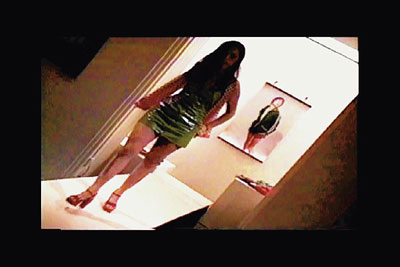




















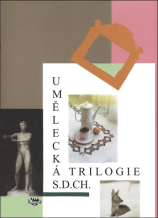
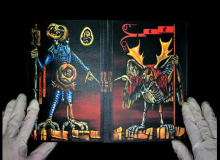
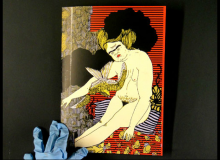
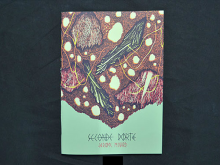


 We Are Rising National Gallery For You! Go to Kyjov by Krásná Lípa no.37.
We Are Rising National Gallery For You! Go to Kyjov by Krásná Lípa no.37.
Comments
There are currently no comments.Add new comment